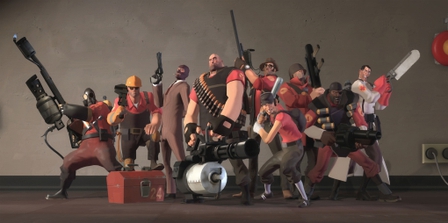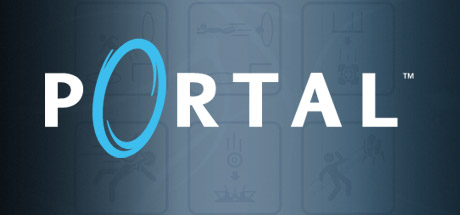SolVanderlyn
Thanos acquires the fully powered Infinity Gauntlet in The Avengers: Infinity War, but loses when all the superheroes team up together to stop him.
Flashback. Back in 2007, I had just graduated high school. I was sort of aimless as to what I wanted to do in life, and was attending a local community college while trying to figure out my future. I had vague notions of majoring in psychology. Ha. HA! Oh, you young fool. Anyway, that's not what this thread is about. That fall, a miraculous collection of games was released on PC under the inconspicuous title of The Orange Box. What is The Orange Box?
The Orange Box was a collection of five games that were released for the price of one. Even now, nine years later, most collections are of games that have already been released at some point. And, indeed, two of the five had been released prior to the Box: fan favorite Half-life 2 and its expansion, Half-life 2: Episode 1. The real meat of the collection was in the three new games it brought along with it. Yes, that's right; two games that were, at the time, still relatively new, and three that were brand new, all for the price of one game. That's how you sell people your games, folks. "The best deal in videogame history," indeed. (Remember, Steam sales didn't exist yet!)
The big one that everyone was waiting for was Half-life 2: Episode 2. The direct continuation of the previous expansion, Episode 1, Episode 2 continued the Half-life 2 story and featured some very impressive technical enhancements along with the new campaign. Most of the game took place outdoors, which was a very big change of pace from the cramped dystopian cityscapes of the first two outings, and the natural environments were absolutely gorgeous. The campaign itself was fast paced and gripping, and held the player's attention from beginning to end. Episode Two featured a new Hunter enemy, which had only been seen briefly in a recorded message in Episode One. The Hunter was a dangerous and intimidating enemy which can follow you both indoors and outdoors. The story set in motion over the last two games was in full force here, and it ended on a massive cliffhanger that deeply affected fans everywhere. We're still waiting on the resolution to that cliffhanger, but I digress. The game met and even surpassed fan expectations and went on to be critically acclaimed success.
The second new game in the Box was Team Fortress 2, a cartoony, team based shooter. TF2 had a rocky development, and even started out as a traditional realistic army shooter, but the final release was unlike anything anyone had seen at the time. Each map was brimming with style, and the Source engine certainly did the game a few favors in both looking nice and running very smoothly. You did not simply choose your class in TF2; each class was a distinctive character with their own voice quips, looks, and personality. Classes such as the Medic or Pyro were highly specialized classes that offered brand new forms of gameplay. Sure, we'd all seen flamethrowers in an FPS before, but to design an entire class around the concept was something innovative, not to say anything of the concept of a strict healing/support class. The highly stylized art, characters that brimmed with personality, innovative map design and streamlined, fast-paced gameplay all came together to create a massively addicting experience. The game was in many ways the precursor to Blizzard's highly successful Overwatch.
The real shocker, for many, was Portal. This is the game that I think everyone expected to be the "bonus" game of The Orange Box, a short and sweet fan-made romp that would be enjoyable, but ultimately forgettable compared to the big names it shared a box with. Boy, did it surpass everyone's expectations. The clean and sterile art style allowed the game to work together with its deceptively innocent concept to tell a gripping story with a very dark undertone. The plot was one that was accentuated greatly by non-verbal storytelling techniques such as writing found on the walls of Aperture Labs, in a manner reminiscent of the Metroid Prime series' scanning visor, and GLaDOS proved to be a villain as memorable as the bone-chilling SHODAN from the acclaimed System Shock 2. Not only was GLaDOS eerie and completely in control, she also served as comic relief, a blend of two supposedly opposing character attributes that was pulled off near flawlessly. Who doesn't remember the ominously innocent voices of the actually-very-deadly turrets scattered throughout Aperture Labs? "The Cake is a Lie" persisted for years after the game's release, and the companion cube's loss was comically lamented by fans everywhere. Portal wasn't just about the story, however. The game itself also proved to be a wonderfully new and experimental game, and offered a puzzle-based experience like no other game had done before. The game was so successful it led to a full fledged sequel years later.
TL;DR: The Orange Box was an amazing collection of games, both new and old, that came with some of the most groundbreaking games that the industry has seen to this day. It floored me so dramatically that I feel the need to attempt to recapture the initial excitement of its release every year. While you can't step in the same river twice, all of the games included in this collection hold up extremely well and remain very enjoyable even nine years after their release. Hats off to one of the biggest and best releases in gaming.
The Orange Box was a collection of five games that were released for the price of one. Even now, nine years later, most collections are of games that have already been released at some point. And, indeed, two of the five had been released prior to the Box: fan favorite Half-life 2 and its expansion, Half-life 2: Episode 1. The real meat of the collection was in the three new games it brought along with it. Yes, that's right; two games that were, at the time, still relatively new, and three that were brand new, all for the price of one game. That's how you sell people your games, folks. "The best deal in videogame history," indeed. (Remember, Steam sales didn't exist yet!)
The big one that everyone was waiting for was Half-life 2: Episode 2. The direct continuation of the previous expansion, Episode 1, Episode 2 continued the Half-life 2 story and featured some very impressive technical enhancements along with the new campaign. Most of the game took place outdoors, which was a very big change of pace from the cramped dystopian cityscapes of the first two outings, and the natural environments were absolutely gorgeous. The campaign itself was fast paced and gripping, and held the player's attention from beginning to end. Episode Two featured a new Hunter enemy, which had only been seen briefly in a recorded message in Episode One. The Hunter was a dangerous and intimidating enemy which can follow you both indoors and outdoors. The story set in motion over the last two games was in full force here, and it ended on a massive cliffhanger that deeply affected fans everywhere. We're still waiting on the resolution to that cliffhanger, but I digress. The game met and even surpassed fan expectations and went on to be critically acclaimed success.
The second new game in the Box was Team Fortress 2, a cartoony, team based shooter. TF2 had a rocky development, and even started out as a traditional realistic army shooter, but the final release was unlike anything anyone had seen at the time. Each map was brimming with style, and the Source engine certainly did the game a few favors in both looking nice and running very smoothly. You did not simply choose your class in TF2; each class was a distinctive character with their own voice quips, looks, and personality. Classes such as the Medic or Pyro were highly specialized classes that offered brand new forms of gameplay. Sure, we'd all seen flamethrowers in an FPS before, but to design an entire class around the concept was something innovative, not to say anything of the concept of a strict healing/support class. The highly stylized art, characters that brimmed with personality, innovative map design and streamlined, fast-paced gameplay all came together to create a massively addicting experience. The game was in many ways the precursor to Blizzard's highly successful Overwatch.
The real shocker, for many, was Portal. This is the game that I think everyone expected to be the "bonus" game of The Orange Box, a short and sweet fan-made romp that would be enjoyable, but ultimately forgettable compared to the big names it shared a box with. Boy, did it surpass everyone's expectations. The clean and sterile art style allowed the game to work together with its deceptively innocent concept to tell a gripping story with a very dark undertone. The plot was one that was accentuated greatly by non-verbal storytelling techniques such as writing found on the walls of Aperture Labs, in a manner reminiscent of the Metroid Prime series' scanning visor, and GLaDOS proved to be a villain as memorable as the bone-chilling SHODAN from the acclaimed System Shock 2. Not only was GLaDOS eerie and completely in control, she also served as comic relief, a blend of two supposedly opposing character attributes that was pulled off near flawlessly. Who doesn't remember the ominously innocent voices of the actually-very-deadly turrets scattered throughout Aperture Labs? "The Cake is a Lie" persisted for years after the game's release, and the companion cube's loss was comically lamented by fans everywhere. Portal wasn't just about the story, however. The game itself also proved to be a wonderfully new and experimental game, and offered a puzzle-based experience like no other game had done before. The game was so successful it led to a full fledged sequel years later.
TL;DR: The Orange Box was an amazing collection of games, both new and old, that came with some of the most groundbreaking games that the industry has seen to this day. It floored me so dramatically that I feel the need to attempt to recapture the initial excitement of its release every year. While you can't step in the same river twice, all of the games included in this collection hold up extremely well and remain very enjoyable even nine years after their release. Hats off to one of the biggest and best releases in gaming.







